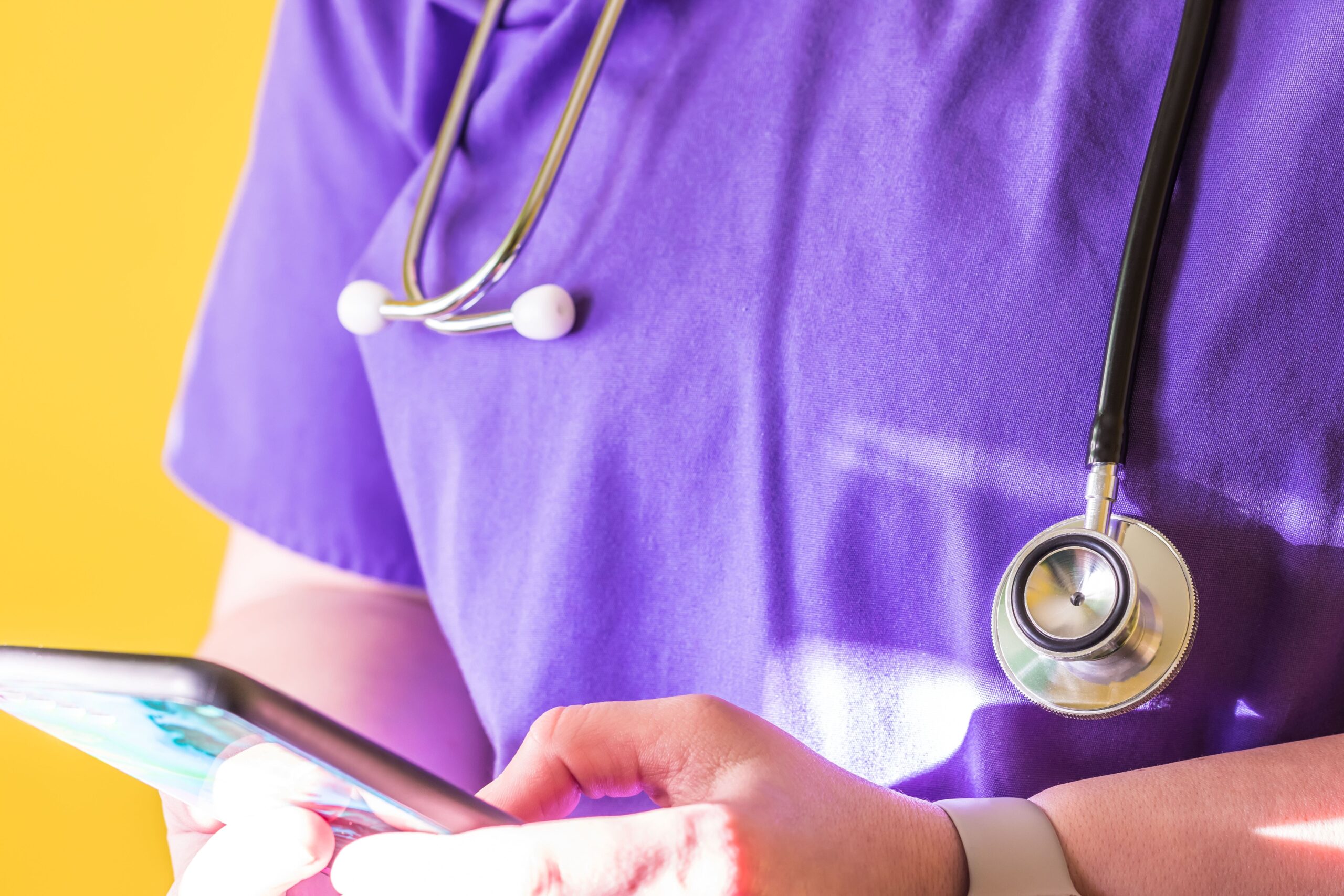Medical wearables are a hot topic right now, and there’s no doubt that they’ll have a huge impact on healthcare in the years to come.
While it’s still early days, we’re starting to see the first wave of medical wearables hit the market—devices like the Apple Watch and Fitbit are already being used by doctors to monitor their patients’ heart rates, and Google Glass has been used in surgery for years.
In addition to these wearable devices, there are also some new technologies coming down the pipe that will change how we take care of ourselves—like a smart contact lens that can measure glucose levels in tears.
What are medical wearables and why should you invest in them?
Medical wearables are devices that allow healthcare professionals to communicate with patients directly. These include contact lenses, eyeglasses, and other medical devices. They can provide a more efficient and personalized treatment experience for patients, as well as improve safety and efficiency in the health care setting.
Essentially, they’re wearable tech that can help you manage your health. These devices can track your heart rate, blood pressure and other vital signs, monitor for signs of disease or illness, and even deliver medications directly to the body.
As more people turn to wearable technology as part of their daily routine, there’s no doubt that it will also play an important role in healthcare.
What are the different types of medical wearables and how should you choose which one to invest in
There are a number of different medical wearables on the market today. Some of the most popular options include contact lenses, eyeglasses, hearing aids, and wheelchairs. You should carefully consider which one is best for you before making your purchase. For example, if you need help seeing clearly while driving, eyeglasses may be a better option than contact lenses.
If you’re struggling to breathe through your nose or have other respiratory issues, hearing aids may be a better choice than eyeglasses. And if you’re just starting out in the healthcare industry, selecting a wheelchair might be a good investment since it can make traveling easier and more comfortable when visiting hospitals or doctor’s offices.
If you’re looking to invest in a wearable, there are a few different options to consider. The first thing you’ll want to do is figure out what kind of device you want, do you want something that monitors your heart rate, or do you want something that can track your sleep patterns? Once you’ve decided on the type of device, it’s time to start thinking about whether or not it’s right for you.
If you have any health conditions, such as diabetes or heart disease, a medical wearable might be a good investment. If you’re just looking for a way to improve your daily health, there are plenty of other options out there that don’t require insurance coverage.
What are the different types of medical wearables and how should you use them
Medical wearables are devices that help doctors and other healthcare professionals perform their tasks more efficiently. They can include everything from a pacemaker to an implantable cardioverter defibrillator (ICD). Some medical wearables are brand new, while others have been in use for years.
Today’s medical wearables come in many forms: There are wrist-worn bands that measure blood pressure and heart rate; smartwatches that can monitor your sleep patterns; wearable patches that track your glucose levels; and even smart clothing that helps you stay cool when you’re exercising.
Some people use these devices just for fun, for example, some people use fitness trackers to see how many steps they take each day or how fast their heart is beating during exercise. But others are using them to help manage serious conditions like diabetes or heart disease.
What are the different types of medical wearables and what are their prices
The most common type of medical wearable is a watch. Prices for watches range from under $30 to over $1,000. However, there are many types of medical wearables and each has its own benefits and drawbacks.
For example, a heart monitoring device can be expensive but can save lives, while an ICD might not be as effective as a pacemaker but could save life in some cases.
What are the different types of medical wearables and what are their benefits
Medical Wearables typically have several benefits over traditional forms of treatment such as surgery or medication. These include:
- Increased accuracy – Medical wearables are able to track patient health information more accurately than traditional treatments, which can save time and money
- Greater safety – Many medical wornables features sensors that allow them to monitor vital signs such as heart rate and blood pressure in real time
- Improved dexterity – woreables help patients with dexterity problems by providing proportional controls
- Enhanced monitoring – By wearing a wearable, healthcare workers can get a better understanding of how the patient is doing even when they’re not directly interacting with them
Tips for using medical wearables in the healthcare setting
Medical wearables can be used in the healthcare setting to improve patient care. For example, a wearable medic may help to monitor a patient’s heart rate or blood pressure, and can also be used to detect seizures or other health concerns.
In the healthcare setting, patient safety and the safety of the staff are often at stake. That’s why we’re so excited to share our tips for using medical wearables in the healthcare setting.
- Make sure your device has been approved by your state board of medicine or other governing body
- Always check with a medical professional before using a wearable device on yourself or another person
- If you’re using a wearable device on someone who is unconscious or otherwise unable to give consent, make sure that person’s next-of-kin or legal guardian is aware of your plans and approves them in writing
- Remember that there may be specific laws governing the use of wearables in hospitals and other institutions (for example, HIPAA regulations). Be sure to adhere strictly to these laws
Use medical wearables to improve the quality of patient care
Medical wearables can also be used to improve the efficiency of patient care. For example, a wearable medic may help to monitor a patient’s heart rate or blood pressure, and can also be used to detect seizures or other health concerns. By using medical Wearables in this way, healthcare providers can better manage patients and save time and resources.
Medical wearables are becoming more and more common in the healthcare industry. These devices can help improve your patient care, and even save you money in the long run.
You might be wondering what a medical wearable is. It’s basically any type of sensor that is worn on the body or attached to clothing, such as a wristband or necklace. They can measure things like heart rate, blood pressure, respiratory rate, and temperature. They can also measure things like steps taken per day or calories burned during exercise.
For patients: they provide valuable information about their health that they may not be able to get from their provider in an office setting; they help track progress over time; they allow them to share data with other healthcare providers if necessary; they allow them to monitor their own health outside of scheduled appointments with providers; they can help ensure compliance with medication schedules or other treatments prescribed by providers; they encourage patients to make healthy lifestyle changes (exercise more often, eat healthier foods).
Use medical wearables to improve the efficiency of patient care
One of the most important things that healthcare providers should consider when using medical wearables is their efficiency. By improving the accuracy and speed of data collection, medical wearables can help keep patients safe and healthy while they receive treatment. Additionally, by monitoring patients’ vital signs at various points throughout their treatment cycle,medical wearables can create an even more efficient care experience for everyone involved.
Medical wearables are changing the way we deliver healthcare. From smart watches to wristbands, these devices are helping us to gather more data about our patients. We can now track their pulse and blood pressure, as well as monitor their heart rate during exercise. We can also use these devices to monitor their sleep patterns and assess how much time they spend sitting down.
This data allows us to make better decisions about how we treat patients and how we can improve their health in general. For example, if a patient has high blood pressure, we could use this data to determine whether or not they need medication or other treatment options. We could also recommend that they exercise more often so that their blood pressure decreases naturally over time.
These devices also allow us to track our patients’ progress over time so that we can see if any changes need made in order for them to feel better overall health-wise
Medical wearables can be a great way to improve patient care and improve the quality of patient care. However, it is important to choose the right medical wearable for each individual case. By following these tips, you can get the most out of your investment.
Contact us for more relevant details. Check our YouTube Channel, Digital Health & Wearables Series. To find out more about how we can help you with your Digital Healthcare Transformation, Healthcare organizational growth, or Healthcare brand positioning, please get in touch via phone +44 (0) 203 3620421 or via e-mail: info@digitalsalutem.com





